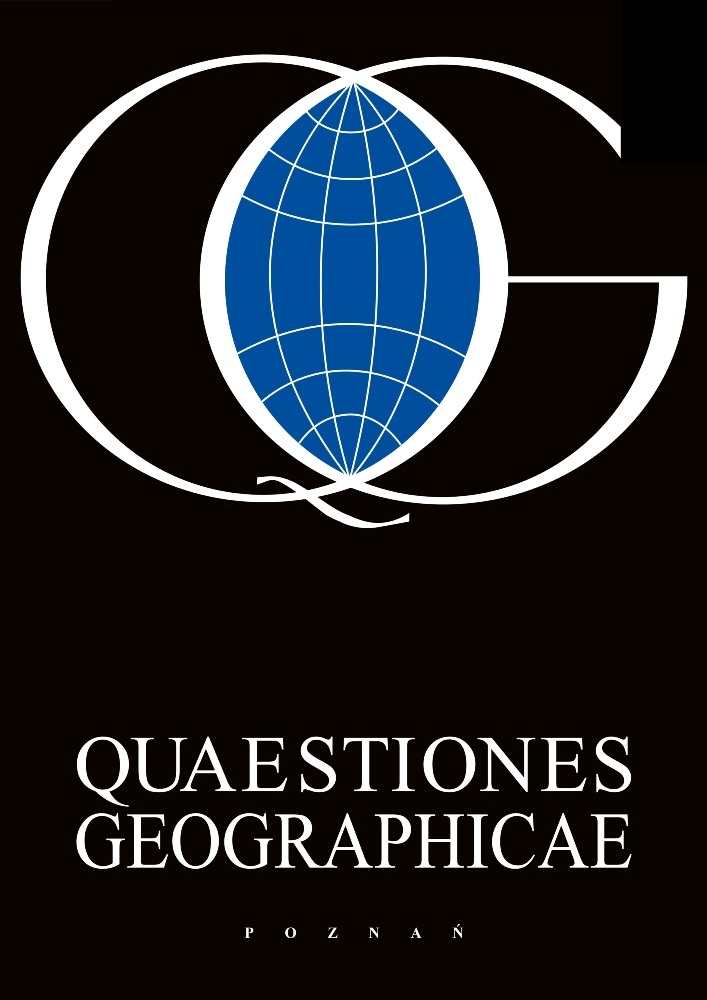Abstract
Basins without outlets, found in abundance in West Pomerania, display a great lithological diversity. Differences in the lithology in the upper Parsęta catchment result from the processes of areal deglaciation during the Vistulian Glaciation (Karczewski 1989). Intraglacial accumulation, action by fluvioglacial water, and direct glacial accumulation have produced various sedimentary series and their mosaic-like pattern. The youngest sedimentary series have developed during fluvial, aeolian and organogenic accumulation (Kostrzewski et al. 1994a). The lithology of most of the closed basins in the catchment largely features fine diamictic sands which pass into sandy diamicton at 100 cm, then medium diamictic sands which turn into fine sands at depths of 50 and 100 cm, and massive diamictic sands which turn again into sandy diamicton at 100 cm. In the catchment of a closed evapotranspiration basin equipped with measuring instruments, the predominant deposit is sands, especially medium-grained ones. Much less abundant are diamictic sands and sandy diamictons, and silts occur only sporadically. Such a lithological diversity is responsible for different rates of the water cycle recorded in the particular parts of the study area.
References
Drwal J., 1975. Zagadnienia bezodpływowości na obszarach młodoglacjalnych (Issues of the absence of an outlet in postglacial areas). Zeszyty Naukukowe Wydziału Biologii i Nauk o Ziemi Uniwersytetu Gdańskiego, Geografia 3: 7-26.
Dzięciołowski W. (ed.), 1980. Ćwiczenia z gleboznawstwa (Soil science exercises). Skrypty Akademii Rolniczej w Poznaniu.
Folk R. L. & Ward W. C., 1957. Brazos River bar: A study in the significance of grain size parameters. Joural. of Sedimentary Petrology 27: 3-26.
Karczewski A., 1985. Spatial arrangement of morainic plateau levels of the northern sloping surface in Pomerania as a result of varying deglaciation. Quaestiones Geographicae Special Issue 1: 99-107.
Karczewski A., 1989. Morfogeneza strefy marginalnej fazy pomorskiej na obszarze lobu Parsęty w vistulianie (Pomorze Środkowe) (Morphogenesis of the marginal zone of the Pomeranian Stage in the area of the Parsęta lobe in the Vistulian, Central Pomerania). Seria Geografia 44, Wydawnictwo Naukowe UAM, Poznań: 48 p.
Kostrzewski A. & Zwoliński Z., 1990. Denudacja chemiczna i mechaniczna w zlewni górnej Parsęty w roku hydrologicznym 1986 (Chemical and mechanical denudation in the upper Parsęta catchment in the hydrological year 1986). Dokumentacja Geograficzna 1: 13-30.
Kostrzewski A. & Zwoliński Z., 1992. Udział denudacji chemicznej i mechanicznej we współczesnym systemie geomorficznym górnej Parsęty (Pomorze Zachodnie) (Contribution of chemical and mechanical denudation to the present-day geomorphic system of the upper Parsęta, West Pomerania). Prace Geograficzne IGPZ PAN 155.
Kostrzewski A., Mazurek M. & Zwoliński Z., 1994a. Dynamika transportu fluwialnego górnej Parsęty jako odbicie funkcjonowania systemu zlewni (Dynamics of the fluvial transport of the upper Parsęta as a reflection of the operation of its catchment). Stowarzyszenie Geomorfologów Polskich, Poznań: 165 p.
Kostrzewski A., Mazurek M., Tomczak G. & Zwoliński Z., 1994b. Geoekosystem jeziora Czarnego, zlewnia górnej Parsęty (Geoecosystem of Lake Czarne, upper Parsęta catchment). In: A. Kostrzewski (ed.), Zintegrowany Monitoring Środowiska Przyrodniczego. Stacja Bazowa Storkowo. Biblioteka Monitoringu Środowiska, Warszawa: 187-211.
Major M., 2009 Charakter i funkcjonowanie zagłębień bezodpływowych w krajobrazie strefy młodoglacjalnej (Pomorze Zachodnie, górna Parsęta) (Nature and operation of basins without an outlet in the landscape of a postglacial area (West Pomerania, the upper Parsęta river). Poznańskie Towarzystwo Przyjaciół Nauk, Poznań.
Miall A. D., 1978. Lithofacies types and vertical profile models in braided river deposits: a summary. In: A. D. Miall (ed.), Fluvial Sedimentology. Canadian Society of Petroleum Geology Memoire 5: 597-604.
Mycielska-Dowgiałło E., 1995. Wybrane cechy teksturalne osadów i ich wartość interpretacyjna (Selected textural characteristics of deposits and their interpretative value). In: E. Mycielska-Dowgiałło & J. Rutkowski (eds), Badania osadów czwartorzędowych. Wybrane metody i interpretacja wyników. Warszawa: 29-105.
Podział na frakcje i grupy granulometryczne (Division into granulometric fractions and groups), 1998. Polska Norma, PN R-04033.
Racinowski R., Szczypek T. & Wach J., 2001. Prezentacja i interpretacja wyników badań uziarnienia osadów czwartorzędowych (Presentation and interpretation of the results of a study of the granulation of Quaternary deposits). Wydawnictwo Uniwersytetu Śląskiego, Katowice.
License
This content is open access.
